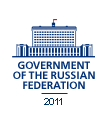Vladivostok is located on the southern extremity of the Muravyov-Amursky peninsula, which is some 30 kilometres in length and has an average width of 12 kilometres. The peninsula divides the Amur Bay on the west and the Ussuri Bay on the east.
Vladivostok was founded on July 2, 1860. Vladivostok's city limits cover an area of 561.5 square kilometres, and the city has 17 kilometres of land borders and 115 kilometres of maritime borders.
Vladivostok is on the same latitude as Sukhumi, Makhachkala, Nice, Madrid, Rome, Marseille, Sapporo and New York City. The city's total area is 56,154 hectares and population is 605,000 people, which accounts for 30% of the population of the Primorye Territory. The population density is 1,078/km2. Vladivostok has 132 kilometres of borders and 35,500 hectares of green areas.
Downtown Vladivostok is located on the banks of Zolotoi Rog, a deep bay protected from wind and convenient for ocean-going vessels. The entrance into Zolotoi Rog is bordered by the Goldobin peninsula to the southeast and the Shkot peninsula to the west.
The Eastern Bosphorus strait links the Amur and Ussuri Bays, separating Russky Island from the mainland.
An archipelago formed by Russky Island, Popov island and Cape Peschany, all parts of Vladivostok, stretches for several dozen kilometres to the south of the Muravyov-Amursky peninsula.
Vladivostok has a pronounced monsoon climate with warm springs, rainy summers, dry and sunny autumns and windy winters with little snow.
The port of Vladivostok receives ships from Japan, China, the United States, Korea, Canada and other countries. Far Eastern Shipping Company vessels travel to over 300 ports in 60 countries annually.
The Vladivostok-Khabarovsk railway line, the final segment of the 9,288-kilometre Trans-Siberian Railway from Moscow, plays a crucial role in the territory's railway service.
Vladivostok Airport has the status of an international airport. There are direct flights from Vladivostok to the Japanese cities of Niigata, Toyama, Narita and Osaka, the South Korean cities of Seoul and Pusan, the Chinese cities of Mudanjiang, Harbin, Tianjin and Dalian, the Vietnamese city of Hanoi and the North Korean city of Tanchon.
There are over 42,000 organisations of various forms of property and over 17,000 small businesses in Vladivostok.
The mining and processing industry, transport, construction, trade and food services play important role in the city's economy, employing over half of its workforce. Marine businesses are also very important in Vladivostok, including fishing, fish processing, ship repair and marine transport.
There are 13 general consulates and foreign missions and over 100 companies which have received international investment in the city.
Vladivostok has developed economic ties with Pacific Rim countries such as the Republic of Korea, Japan, China, Singapore, Vietnam and the U.S.
Fish, seafood, timber, ferrous and non-ferrous metals account for the majority of exports, although international, service-orientated trade is growing.
Since 1992 Vladivostok has established relations with other cities on the Pacific Rim, specifically the U.S. cities of San Diego, Tacoma and Juno, the Japanese cities of Niigata, Akita and Hakodate, the South Korean city of Pusan and the Chinese city of Dalian.
Vladivostok is the seat of the Far Eastern division of the Russian Academy of Sciences, which carries out research in physics, mathematics, engineering, chemistry and biology, and includes the scientific centres in Vladivostok, Khabarovsk, Blagoveshchensk, Magadan, Petropavlovsk-Kamchatsky and Yuzhno-Sakhalinsk.
Besides the Academy of Sciences, there are also specialised scientific and research institutes in Vladivostok. The largest of them is the Pacific Scientific and Research Institute of the Fishing Industry and Oceanography, the oldest scientific establishment in Vladivostok. The institute studies the resources of the ocean in order to use them more comprehensively and intelligently.





